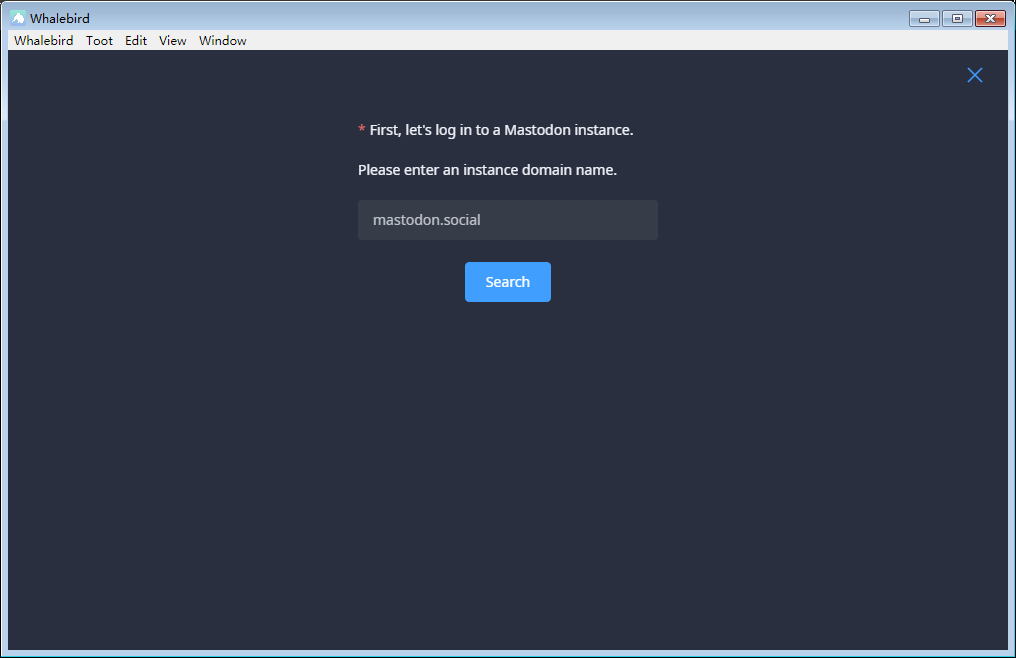实例学习gcc+gdb+make
时间:2022-03-10 17:09
make
./main
什么,输出了正确的结果,那就对了。下面我们来分析下上面的Makefile。
- Makefile的格式
目标:依赖
命令(以TAB开头)
目标是链接后的可执行文件名;依赖是工程中的用于编译的c文件和用于连接的*.o文件的集合;就用gcc编译的工程而言,命令就是gcc命令,可以使用任意的gcc参数。
-
使用make命令解析Makefile文件,解析的文件名可以是Makefile或makefile,如果是其它名称,则需要使用make -f [filename]指定文件名。强烈建议使用Makefile作为文件名(符合Linux的哲学——简洁、首字母大写容易突出文件位置)。
-
Makefile可以有多个目标(main.o add.o sub.o),但只能有一个最终目标(main)。Makefile文件中第一条规则中的目标将确定为最终目标。make命令默认执行最终目标,若只执行Makefile中其它目标,使用make [Target],如要清除工程下的目标文件,使用
make clean
-
Makefile中将那些没有任何依赖只有执行动作的目标称伪目标(clean),使用.PHONY声明。伪目标不能作为最终目标。
-
Makefile中使用变量:Makefile中的变量将是按字符串的方式进行替换,下面是一些系统特殊的变量。
$^: 代表所有依赖文件
$@:代表目标
$<:代表依赖文件中的第一个依赖文件
变量可以大大简化Makefile的编写复杂度,使用变量后的Makefile如下:
CC=gcc
OBJS=main.o add.o sub.o
CFLAGS=-D_DEBUG
main:$(OBJS)
$(CC) $(CFLAGS) $^ -o $@
main.o:main.c
$(CC) $(CFLAGS) -c $^ -o $@
add.o:add.c
$(CC) $(CFLAGS) -c $^ -o $@
sub.o:sub.c
$(CC) $(CFLAGS) -c $^ -o $@
.PHONY:clean
clean:
-rm main *.o
其中CC、OBJS、CFLAGS都是自定义的Makefile变量,$^和$@是系统特殊的变量。
- 上面的Makefile还是太复杂,可不可以再简单点,没问题:使用模式匹配。
CC=gcc
OBJS=main.o add.o sub.o
CFLAGS=-D_DEBUG
main:$(OBJS)
$(CC) $(CFLAGS) $^ -o $@
%.o:%.c
$(CC) $(CFLAGS) -c $^ -o $@
.PHONY:clean
clean:
-rm main *.o
上面的Makefile使用%用来匹配任何非空字符串。
- 模式规则“%.o:%.c”,它表示的含义是:所有的.o文件依赖于对应的.c文件。
- 模式规则%.o:debug.h,表示所有的.o文件都依赖于头文件“debug.h”
在编写大型程序时,常常工程中的.c都有与之对应的.h文件,以上两种用法在Makfile很常用。
除了模式匹配,Makefile中还可以使用通配符:。 如上面的伪目标中就使用.o就代表所有后缀为.o的文件。
- 好吧,加足马力,再简单点:使用Makefile的自动推导规则。请注意,这可以简化一些Makefile,但如果你不注意,就可能出错,因此不推荐使用。
CC=gcc
OBJS=main.o add.o sub.o
CFLAGS=-D_DEBUG
main:$(OBJS)
$(CC) $^ -o $@
main.o:
add.o:add.h
sub.o:sub.h
.PHONY:clean
clean:
-rm main *.o
有木有,在生成main.o add.o sub.o目标时连命令都省去了,Makefile能自动推导使用gcc命令编译,还知道要加-D_DEBUG选项,这么神奇?这都要归功于CC和CFLAGS变量,你换成别的变量名试试,看看还行不。所以说:Makefile的自动推导规则最好慎用,除非你能确保正确。
下面是将模式匹配和自动推导规则结合到一起的Makefile文件。
CC=gcc
OBJS=main.o add.o sub.o
CFLAGS=-D_DEBUG
main:$(OBJS)
$(CC) $^ -o $@
%.o:add.h sub.h
.PHONY:clean
clean:
-rm main *.o
知足常乐,不雅太贪了,能简化到这样就OK了。
-
Makefile中注释使用#,在命令前加上@能取消回显
-
多目录的Makefile
- include可包含其它目录的Makefile文件
- export可导出当前Makefile中的变量共其它Makefile使用
- VPATH变量可以指定依赖文件的搜索目录,多个目录间使用:隔开,如
VPATH = src:../headers # 搜索路径默认包括当前路径
- 关键字vpath可以指定在某目录下选择性搜索某模式匹配的依赖文件,如
vpath %.h ../headers # 搜索路径默认包括当前路径
上面提到的4点内容将在之后的Makefile实例中看到。
- 知道一些简单的Makefile内嵌函数
关于Makefile内嵌函数及更多内容请参考文献[5].
Makefile工程模板实例
本小节将给出两个通用的工程Makefile实例,可作为模板直接应用到自己的工程中,这些实例都来源于网络,原作者保留版权。
阅读Makefile也是一种享受,就像喝着牛奶读着小说,热情洋溢的Hacker们,研究去吧!
- 第一个模板:将该模板添加到工程所在目录,指定相关的变量即可使用(作者还附有参考哈)
#############################################################
# Generic Makefile for C/C++ Program
#
# License: GPL (General Public License)
# Author: whyglinux <whyglinux AT gmail DOT com>
# Date: 2006/03/04 (version 0.1)
# 2007/03/24 (version 0.2)
# 2007/04/09 (version 0.3)
# 2007/06/26 (version 0.4)
# 2008/04/05 (version 0.5)
#
# Description:
# ------------
# This is an easily customizable makefile template. The purpose is to
# provide an instant building environment for C/C++ programs.
#
# It searches all the C/C++ source files in the specified directories,
# makes dependencies, compiles and links to form an executable.
#
# Besides its default ability to build C/C++ programs which use only
# standard C/C++ libraries, you can customize the Makefile to build
# those using other libraries. Once done, without any changes you can
# then build programs using the same or less libraries, even if source
# files are renamed, added or removed. Therefore, it is particularly
# convenient to use it to build codes for experimental or study use.
#
# GNU make is expected to use the Makefile. Other versions of makes
# may or may not work.
#
# Usage:
# ------
# 1. Copy the Makefile to your program directory.
# 2. Customize in the "Customizable Section" only if necessary:
# * to use non-standard C/C++ libraries, set pre-processor or compiler
# options to <MY_CFLAGS> and linker ones to <MY_LIBS>
# (See Makefile.gtk+-2.0 for an example)
# * to search sources in more directories, set to <SRCDIRS>
# * to specify your favorite program name, set to <PROGRAM>
# 3. Type make to start building your program.
#
# Make Target:
# ------------
# The Makefile provides the following targets to make:
# $ make compile and link
# $ make NODEP=yes compile and link without generating dependencies
# $ make objs compile only (no linking)
# $ make tags create tags for Emacs editor
# $ make ctags create ctags for VI editor
# $ make clean clean objects and the executable file
# $ make distclean clean objects, the executable and dependencies
# $ make help get the usage of the makefile
#
#===========================================================================
## Customizable Section: adapt those variables to suit your program.
##==========================================================================
# The pre-processor and compiler options.
MY_CFLAGS =
# The linker options.
MY_LIBS =
# The pre-processor options used by the cpp (man cpp for more).
CPPFLAGS = -Wall
# The options used in linking as well as in any direct use of ld.
LDFLAGS =
# The directories in which source files reside.
# If not specified, only the current directory will be serached.
SRCDIRS =
# The executable file name.
# If not specified, current directory name or `a.out‘ will be used.
PROGRAM =
## Implicit Section: change the following only when necessary.
##==========================================================================
# The source file types (headers excluded).
# .c indicates C source files, and others C++ ones.
SRCEXTS = .c .C .cc .cpp .CPP .c++ .cxx .cp
# The header file types.
HDREXTS = .h .H .hh .hpp .HPP .h++ .hxx .hp
# The pre-processor and compiler options.
# Users can override those variables from the command line.
CFLAGS = -g -D_DEBUG -O2
CXXFLAGS= -g -O2
# The C program compiler.
CC = gcc
# The C++ program compiler.
CXX = g++
# Un-comment the following line to compile C programs as C++ ones.
#CC = $(CXX)
# The command used to delete file.
RM = rm -f
CTAGS = ctags
CTAGSFLAGS = --c++-kinds=+p --fields=+iaS --extra=+q -R
## Stable Section: usually no need to be changed. But you can add more.
##==========================================================================
SHELL = /bin/sh
EMPTY =
SPACE = $(EMPTY) $(EMPTY)
ifeq ($(PROGRAM),)
CUR_PATH_NAMES = $(subst /,$(SPACE),$(subst $(SPACE),_,$(CURDIR)))
PROGRAM = $(word $(words $(CUR_PATH_NAMES)),$(CUR_PATH_NAMES))
ifeq ($(PROGRAM),)
PROGRAM = a.out
endif
endif
ifeq ($(SRCDIRS),)
SRCDIRS = .
endif
SOURCES = $(foreach d,$(SRCDIRS),$(wildcard $(addprefix $(d)/*,$(SRCEXTS))))
HEADERS = $(foreach d,$(SRCDIRS),$(wildcard $(addprefix $(d)/*,$(HDREXTS))))
SRC_CXX = $(filter-out %.c,$(SOURCES))
OBJS = $(addsuffix .o, $(basename $(SOURCES)))
DEPS = $(OBJS:.o=.d)
## Define some useful variables.
DEP_OPT = $(shell if `$(CC) --version | grep "GCC" >/dev/null`; then echo "-MM -MP"; else echo "-M"; fi )
DEPEND = $(CC) $(DEP_OPT) $(MY_CFLAGS) $(CFLAGS) $(CPPFLAGS)
DEPEND.d = $(subst -g ,,$(DEPEND))
COMPILE.c = $(CC) $(MY_CFLAGS) $(CFLAGS) $(CPPFLAGS) -c
COMPILE.cxx = $(CXX) $(MY_CFLAGS) $(CXXFLAGS) $(CPPFLAGS) -c
LINK.c = $(CC) $(MY_CFLAGS) $(CFLAGS) $(CPPFLAGS) $(LDFLAGS)
LINK.cxx = $(CXX) $(MY_CFLAGS) $(CXXFLAGS) $(CPPFLAGS) $(LDFLAGS)
.PHONY: all objs tags ctags clean distclean help show
# Delete the default suffixes
.SUFFIXES:
all: $(PROGRAM)
# Rules for creating dependency files (.d).
#------------------------------------------
%.d:%.c
@echo -n $(dir $<) > $@
@$(DEPEND.d) $< >> $@
%.d:%.C
@echo -n $(dir $<) > $@
@$(DEPEND.d) $< >> $@
%.d:%.cc
@echo -n $(dir $<) > $@
@$(DEPEND.d) $< >> $@
%.d:%.cpp
@echo -n $(dir $<) > $@
@$(DEPEND.d) $< >> $@
%.d:%.CPP
@echo -n $(dir $<) > $@
@$(DEPEND.d) $< >> $@
%.d:%.c++
@echo -n $(dir $<) > $@
@$(DEPEND.d) $< >> $@
%.d:%.cp
@echo -n $(dir $<) > $@
@$(DEPEND.d) $< >> $@
%.d:%.cxx
@echo -n $(dir $<) > $@
@$(DEPEND.d) $< >> $@
# Rules for generating object files (.o).
#----------------------------------------
objs:$(OBJS)
%.o:%.c
$(COMPILE.c) $< -o $@
%.o:%.C
$(COMPILE.cxx) $< -o $@
%.o:%.cc
$(COMPILE.cxx) $< -o $@
%.o:%.cpp
$(COMPILE.cxx) $< -o $@
%.o:%.CPP
$(COMPILE.cxx) $< -o $@
%.o:%.c++
$(COMPILE.cxx) $< -o $@
%.o:%.cp
$(COMPILE.cxx) $< -o $@
%.o:%.cxx
$(COMPILE.cxx) $< -o $@
# Rules for generating the tags.
#-------------------------------------
ctags: $(HEADERS) $(SOURCES)
$(CTAGS) $(CTAGSFLAGS) $(HEADERS) $(SOURCES)
# Rules for generating the executable.
#-------------------------------------
$(PROGRAM):$(OBJS)
ifeq ($(SRC_CXX),) # C program
$(LINK.c) $(OBJS) $(MY_LIBS) -o $@
@echo Type ./$@ to execute the program.
else # C++ program
$(LINK.cxx) $(OBJS) $(MY_LIBS) -o $@
@echo Type ./$@ to execute the program.
endif
ifndef NODEP
ifneq ($(DEPS),)
sinclude $(DEPS)
endif
endif
clean:
$(RM) $(OBJS) $(PROGRAM) $(PROGRAM).exe
distclean: clean
$(RM) $(DEPS) TAGS
# Show help.
help:
@echo ‘Generic Makefile for C/C++ Programs (gcmakefile) version 0.5‘
@echo ‘Copyright (C) 2007, 2008 whyglinux <whyglinux@hotmail.com>‘
@echo
@echo ‘Usage: make [TARGET]‘
@echo ‘TARGETS:‘
@echo ‘ all (=make) compile and link.‘
@echo ‘ NODEP=yes make without generating dependencies.‘
@echo ‘ objs compile only (no linking).‘
@echo ‘ tags create tags for Emacs editor.‘
@echo ‘ ctags create ctags for VI editor.‘
@echo ‘ clean clean objects and the executable file.‘
@echo ‘ distclean clean objects, the executable and dependencies.‘
@echo ‘ show show variables (for debug use only).‘
@echo ‘ help print this message.‘
@echo
@echo ‘Report bugs to <whyglinux AT gmail DOT com>.‘
# Show variables (for debug use only.)
show:
@echo ‘PROGRAM :‘ $(PROGRAM)
@echo ‘SRCDIRS :‘ $(SRCDIRS)
@echo ‘HEADERS :‘ $(HEADERS)
@echo ‘SOURCES :‘ $(SOURCES)
@echo ‘SRC_CXX :‘ $(SRC_CXX)
@echo ‘OBJS :‘ $(OBJS)
@echo ‘DEPS :‘ $(DEPS)
@echo ‘DEPEND :‘ $(DEPEND)
@echo ‘COMPILE.c :‘ $(COMPILE.c)
@echo ‘COMPILE.cxx :‘ $(COMPILE.cxx)
@echo ‘link.c :‘ $(LINK.c)
@echo ‘link.cxx :‘ $(LINK.cxx)
## End of the Makefile ## Suggestions are welcome ## All rights reserved ##
##############################################################
我是从这里找到第一个模板的:。使用本文的的Example2测试。
- 第二个模板:适用于中大型工程,使用多个Makefile,通过include方式调用
工程文件的组织方式为:
该部分内容来自于CSDN的一篇博文:项目实用makefile()。
你可参考该博文,或下载源码研究下,很有帮助。
作者使用文件名为make.global的Makefile进行全局编译的一些规则设定,内容如下:
# compile macro
CC = g++
CFLAGS = -O2 -Wall
LDFLAGS = -lm
INCLUDES= -I/usr/local/include
# recursive make
.PHONY: subdirs ${SUBDIRS} cleansubdirs
subdirs: ${SUBDIRS}
${SUBDIRS}:
${MAKE} -C $@ all
# recursive make clean
cleansubdirs:
@for dir in ${SUBDIRS}; do ${MAKE} -C $$dir clean; done
# dependence
%.o: %.cpp
${CC} ${CFLAGS} ${INCLUDES} -c $< -o $@
%.o: %.cc
${CC} ${CFLAGS} ${INCLUDES} -c $< -o $@
项目根节点的Makefile使用export和include命令将上面的make.global中的变量信息导出,具体如下:
# target, subdir, objects in current dir
TARGET = test
SUBDIRS = src
OBJECTS =
all:subdirs ${OBJECTS}
${CC} -o ${TARGET} $$(find ./${SUBDIRS} -name ‘*.o‘) ${LDFLAGS} ${INCLUDES}
clean:cleansubdirs
rm -f ${TARGET} ${OBJECTS}
# path of "make global scripts"
# NOTE, use absolute path. export once, use in all subdirs
export PROJECTPATH=${PWD}
export MAKEINCLUDE=${PROJECTPATH}/makeconfig/make.global
# include "make global scripts"
include ${MAKEINCLUDE}
其它目录下的Makefile比较具有一致性,如src目录下Makefile:
# subdir and objects in current dir
SUBDIRS = module-a module-b
OBJECTS = main.o
all:subdirs ${OBJECTS}
clean:cleansubdirs
rm -f ${OBJECTS}
include ${MAKEINCLUDE}
叶子节点的目录下,如:
src/module-a
# subdir and objects in current dir
SUBDIRS =
OBJECTS = test.o
all:subdirs ${OBJECTS}
clean:cleansubdirs
rm -f ${OBJECTS}
include ${MAKEINCLUDE}
src/module-b
# subdir and objects in current dir
SUBDIRS =
OBJECTS = test.o
all:subdirs ${OBJECTS}
clean:cleansubdirs
rm -f ${OBJECTS}
include ${MAKEINCLUDE}
因此,只要在项目根目录使用一个make命令就能自动递归的调用其它目录下的Makefile对整个工程进行编译,尤其适合多人合作的项目中。
我把作者的这部分代码放在了Example3实例中。
5 参考资源
- GCC Manual "Using the GNU Compiler Collection (GCC)" @ .
- GNU ‘make‘ manual @ .
- GCC and Make
- Robert Mecklenburg, "Managing Projects with GNU Make", 3rd Edition, 2004.
- GNU make中文手册. 翻译整理:徐海兵, 2004-09-11
- The gnu Source-Level Debugger for gdb (GDB). .
- 本文的代码实例:
实例学习gcc+gdb+make,布布扣,bubuko.com



























